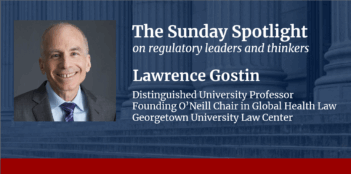
Experts discuss how policymakers can rebuild unemployment benefits for a changing economy.
When the COVID-19 pandemic shut down large parts of the economy, over 20 million Americans lost their jobs in a single month. Unemployment insurance became a lifeline for households nationwide. Congress responded with historic expansions under the CARES Act, which temporarily extended unemployment benefits to gig workers—namely, independent contractors and freelancers who earn income through short-term, on-demand jobs—and increased weekly payments. But when federal emergency programs ended, the surge in claims shifted to state unemployment systems that were never designed to handle such volume. Many state agencies, still using decades-old technology, struggled to process applications and deliver payments on time, leaving some workers waiting months for relief. These challenges have prompted calls for the most sweeping overhaul of unemployment insurance since the program was created in 1935.
Unemployment insurance operates as a joint federal–state program administered under the Social Security Act of 1935 by the U.S. Department of Labor. States design and run their own systems within broad federal parameters, including setting payroll taxes that fund benefits and eligibility standards for claimants. The Labor Department issues regulations, audits state performance, and provides grants for system improvements. This shared structure, however, has led to wide disparities between states in benefit levels, coverage, and fraud-prevention measures.
To strengthen the nation’s fragmented unemployment insurance infrastructure, the Biden Administration launched the Open Unemployment Insurance Initiative in 2021, aimed at helping states securely share unemployment insurance data and streamline claims. As part of this effort, the Labor Department created Tiger Teams—groups of policy, technology, and operations experts—to collaborate with state workforce agencies on improving the timeliness and fairness of benefit delivery. Yet recent reports warn that funding cuts and uneven state participation in the initiative risk undermining progress. As of 2025, only about 27 percent of unemployed workers receive unemployment benefits, underscoring the significant work that remains to be done in building an accessible and resilient system.
Today, policymakers and scholars debate how far unemployment insurance reform should go. Some advocate a federal baseline for benefits and broadening benefit eligibility to include nontraditional workers. Others argue that making emergency expansions permanent could strain state trust funds—the reserves built from employer payroll taxes that finance unemployment benefits—or discourage benefit recipients from returning to work. A growing number of experts recommend modernization over expansion—upgrading identity-verification systems, improving user interfaces, and enabling real-time data sharing across state lines.
In this week’s Saturday Seminar, experts discuss how the federal and state governments can rebuild unemployment insurance systems that are more equitable, technologically modern, and fiscally sustainable.
- In a report from the University of Michigan’s Gerald R. Ford School of Public Policy, Sander Levin of the University of Michigan, Patrick Cooney of Michigan Future, and the staff of the University of Michigan Poverty Solutions call for permanent reforms to unemployment insurance modeled on pandemic-era expansions. Levin and his coauthors argue that federal standards should guarantee adequate funding, coverage, and duration of benefits across states. The Levin team proposes raising the cap on annual earnings subject to unemployment insurance taxes, restoring a 26-week eligibility period, and extending coverage to gig and self-employed workers. Levin and coauthors contend that a modernized, federally guided unemployment insurance system would stabilize households and strengthen the American economy during economic downturns.
- Preventing fraud is essential to deliver resilient, equitable, and timely unemployment benefits, argue Justis Antonioli, Ben Gitis, and Jack Malde of the Bipartisan Policy Center in a report for that institution. The Antonioli team explains that outdated information technology and detection systems enabled widespread fraud during the COVID-19 pandemic, resulting in at least $100 billion in stolen benefits as states struggled to process a surge in unemployment claims. Antonioli and his coauthors recommend improving the allocation of federal resources to states and strengthening digital identity verification and data sharing across jurisdictions. The Antonioli team urges a balance between fraud prevention and accessibility to ensure that all eligible workers receive timely unemployment benefits.
- In an article in the Risk Management and Insurance Review, Juhyun Bae of the University of Texas Rio Grande Valley finds that temporarily extending unemployment insurance to gig, freelance, and other non-traditional workers during the COVID-19 pandemic substantially improved their financial stability and mental well-being. When 16 states ended these expanded benefits in mid-2021, financial hardship and depression among affected workers rose measurably, Bae observes. Bae argues that excluding non-standard workers from regular unemployment insurance leaves millions without a safety net. Bae calls for permanently integrating these workers into the unemployment benefit program to reflect today’s labor market, where independent contracting and platform-based work are increasingly common.
- Labor market mismatches occur when workers’ skills differ from the skills employers need, explains Anders Forslund of Uppsala University in a working paper for the Institute for Evaluation of Labour Market and Education Policy. Although Nordic economies recovered swiftly from the COVID-19 recession, Forslund finds that some still faced high unemployment alongside record job vacancies—evidence that rapid recovery alone cannot correct structural skill gaps. Targeted job search assistance can help reduce mismatches but may also crowd out other job seekers, Forslund notes. Forslund recommends expanding vocational training and subsidized jobs to align the skills of workers with employer needs, pointing to the Nordic region’s long-standing investment in labor market policies as a foundation for continued reform.
- In a report for the Federal Reserve Bank of San Francisco, Greeshma Avaradi, Marianna Kudlyak, and Brandon Miskanic of the Federal Reserve Bank of San Francisco, and David Wiczer of the Federal Reserve Bank of Atlanta, attribute the rise in U.S. unemployment since mid-2023 primarily to a decline in the job-finding rate, rather than an increase in layoffs. Avaradi and her coauthors note that the median unemployment duration has also lengthened from eight to over ten weeks, echoing patterns often seen before recessions. The Avaradi team’s findings underscore the need for unemployment insurance systems that can respond promptly and effectively when workers remain jobless for extended periods.
- In a report from the U.S. Department of Labor Office of Inspector General, Carolyn Hantz of the organization evaluates how federal and state agencies administered unemployment programs under the CARES Act between 2020 and 2021. From surveys of six communities, Hantz finds that most beneficiaries said pandemic relief was sufficient to cover basic necessities. Hantz reports that the programs distributed over $516 million to 33,400 claimants across the six communities and earned an average satisfaction rating of 4.1 out of 5. Hantz concludes that temporary federal expansions—by offering higher benefits and broader eligibility than regular state programs—demonstrated the value of stronger nationwide standards to ensure the adequacy and accessibility of unemployment benefits.
The Saturday Seminar is a weekly feature that aims to put into written form the kind of content that would be conveyed in a live seminar involving regulatory experts. Each week, The Regulatory Review publishes a brief overview of a selected regulatory topic and then distills recent research and scholarly writing on that topic.



